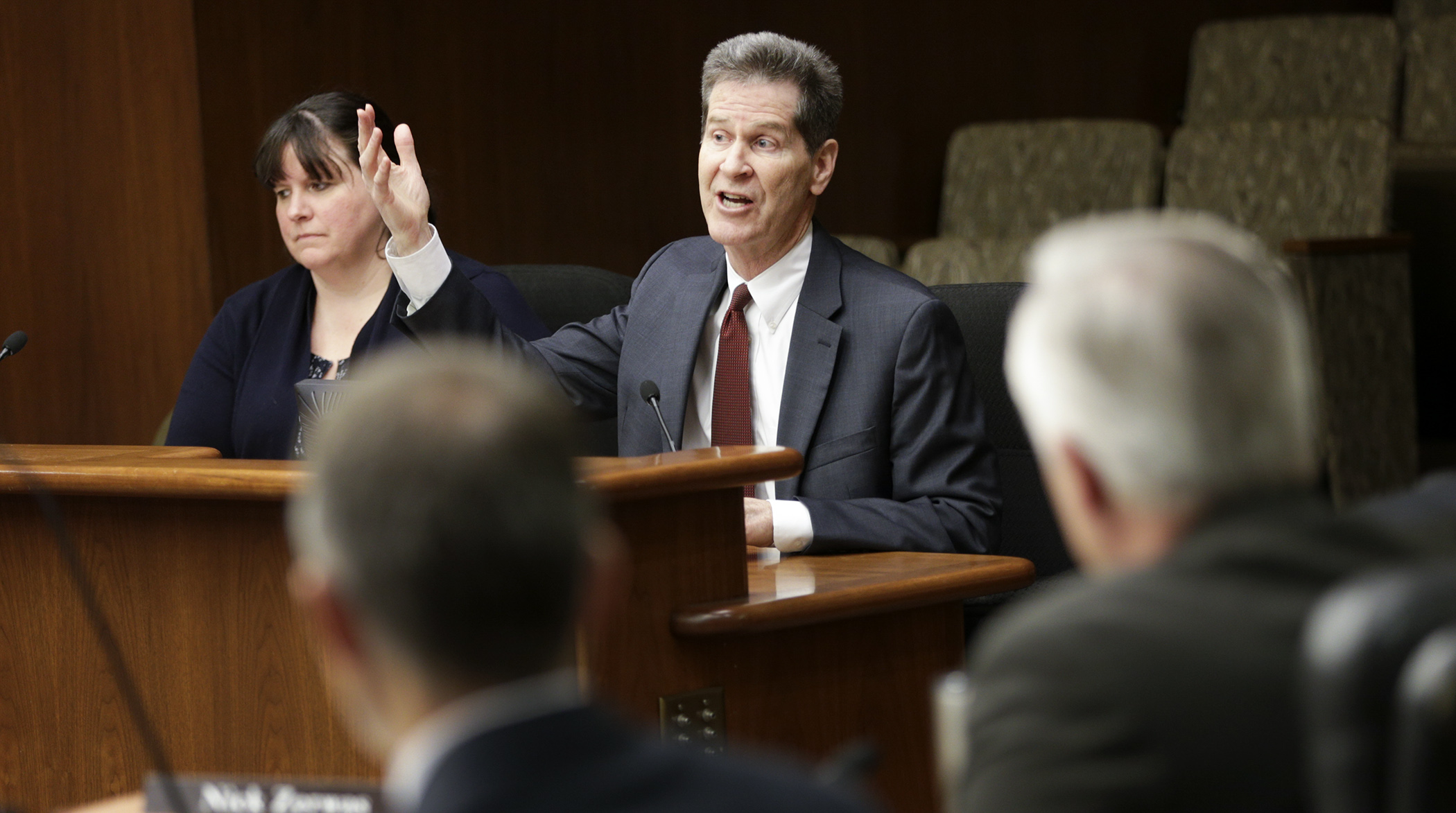Tuition freezes, campus support top governor’s higher ed supplemental spending wish list

Keeping higher education attainable for students and maintaining campus infrastructure are top priorities of Gov. Mark Dayton’s supplemental budget recommendations for higher education.
Higher Education Commissioner Larry Pogemiller presented the governor’s $29.6 million proposal to the House Higher Education and Career Readiness Policy and Finance Committee at an informational hearing Tuesday.
The largest investments would be $10 million in Fiscal Year 2019 to freeze tuition for University of Minnesota resident undergraduate students. Similarly, $10 million would be appropriated to Minnesota State to offset inflationary operations and maintenance cost increases.
The governor’s proposal also includes $8.5 million in Fiscal Year 2019 to upgrade Minnesota State’s Integrated Statewide Record System. The base for this appropriation would be $12.5 million for Fiscal Years 2020 through 2023.
The remaining $1.1 million in appropriations would be used to support the Minnesota DREAM Act. It provides Pell Grants to non-citizen students who attended at least three years of high school in Minnesota and either received a diploma or a GED.
During the 2016-17 school year, Pogemiller said that the office provided grants to 485 students at about $3,600 per student. Because of their citizenship status they’re not eligible for federal Pell Grant dollars.
“These are students who are not citizens, but who grew up in Minnesota, went to Minnesota high schools, graduated from Minnesota high schools and they’re just trying to get a college degree,” he said.
Pogemiller estimates that with the additional funding they’ll be able to provide larger grant amounts to approximately 568 students.
Related Articles
Search Session Daily
Advanced Search OptionsPriority Dailies
Ways and Means Committee OKs proposed $512 million supplemental budget on party-line vote
By Mike Cook Meeting more needs or fiscal irresponsibility is one way to sum up the differences among the two parties on a supplemental spending package a year after a $72 billion state budg...
Meeting more needs or fiscal irresponsibility is one way to sum up the differences among the two parties on a supplemental spending package a year after a $72 billion state budg...
Minnesota’s projected budget surplus balloons to $3.7 billion, but fiscal pressure still looms
By Rob Hubbard Just as Minnesota has experienced a warmer winter than usual, so has the state’s budget outlook warmed over the past few months.
On Thursday, Minnesota Management and Budget...
Just as Minnesota has experienced a warmer winter than usual, so has the state’s budget outlook warmed over the past few months.
On Thursday, Minnesota Management and Budget...